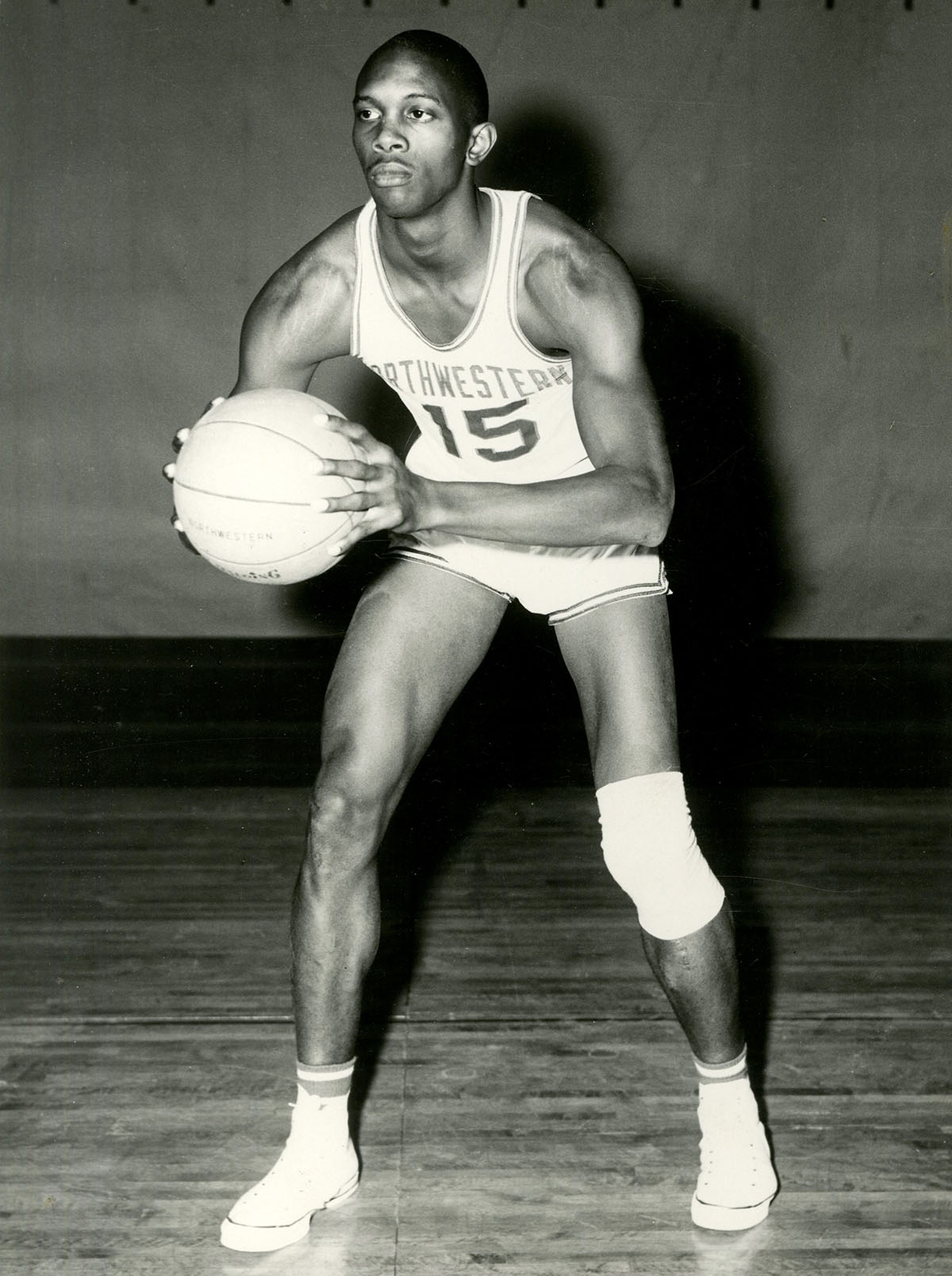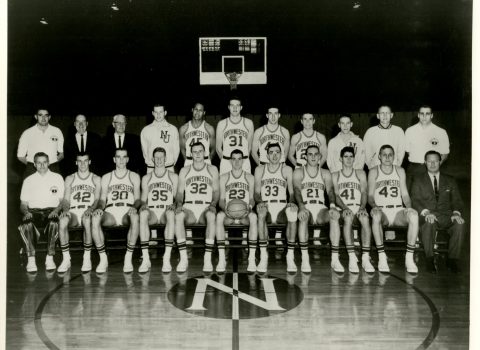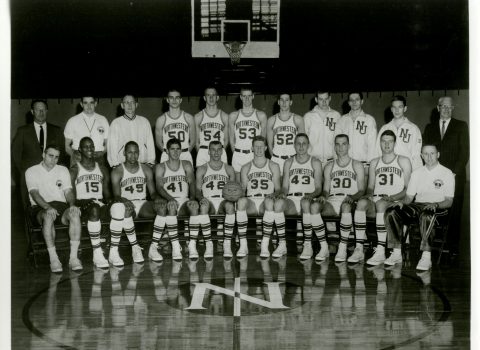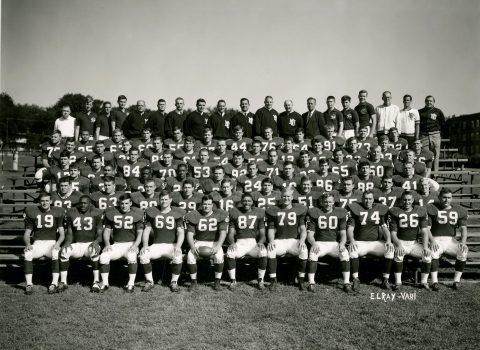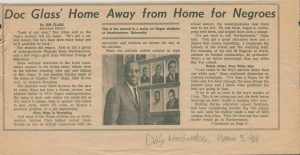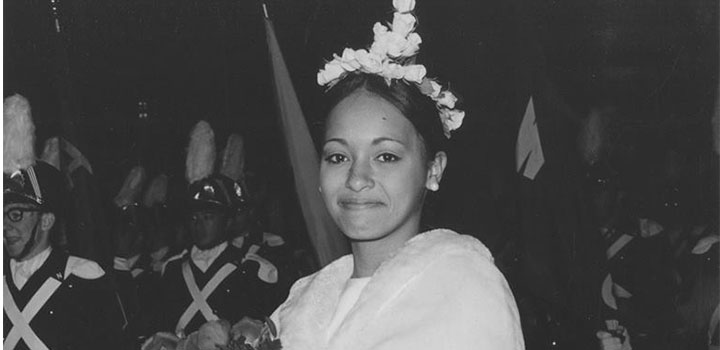Why Students Made Demands
While Northwestern University has been known for offering an exemplary education to its students, it was not always considered a safe space for its entire student body. There were fundamental structures and policies that prohibited African Americans from fully participating in all aspects of campus life. There are accounts of racial discrimination experienced by Northwestern’s first Black students dating back at least since the turn of the 20th century. For instance, Black students were refused entry into swimming pools, rejected from participating in Greek activities, and denied from on-campus housing; and they also experienced being in a space where blackface minstrel shows were an acceptable part of campus culture. These are a few examples of the racial injustices that Black students experienced on campus. On May 3, 1968, Black students occupied the Bursar’s Office and intentionally “disturbed the serenity of college life.” They sought a sense of belonging on a campus and demanded that their University value them as respected and recognized members of the Northwestern community. They wanted their university to serve as a space where they could excel academically and attain a sense of belonging and safety on campus. The 1968 demonstration was a response to a culmination of injustices and a long struggle for African American students seeking inclusion and equality.
NU Black Student Enrollment to 1969
5Prior to 1966, on average, 5 Black students enrolled in each incoming class.
54In 1966, the first year the NUCAP program was introduced, 70 Black students were accepted to NU, while 54 enrolled in the fall of 1966.
70After the Takeover, 120 Black students were accepted to Northwestern University, while 70 enrolled in the fall of 1968.
Historically, Northwestern University had a targeted and small Black student population. Prior to 1966, there was an average of five Black students enrolled each incoming class. These students were typically males who were given athletic scholarships. For instance, in 1961, 80% of the 25 enrolled Black students were male athletes. Students such as Herman Cage, who was a freshman at Northwestern in 1965, with a height of 5’3, and a business major, was often mistaken for a basketball or football player even though he was not athletically involved on campus.
The enrollment of Black women was even smaller. When Eleanor Steele entered in 1964, four Black women attended Northwestern. She recalled some of her female peers feeling socially isolated because they did not have a social group to join. An example of the social impact is illustrated in the imbalance in the Black male to Black female ratio as there was a small dating pool. Some Black women who attended Northwestern often commuted from Chicago, in part, due to housing restrictions, and many had boyfriends from the neighborhoods they lived in. It was also socially unacceptable for black men to date white women.
A key factor for why Black students made demands in 1968 had to do with a shift in the enrollment of African American students at Northwestern University. Federal laws emerged to encourage increased representation of marginalized groups including Blacks, Catholics, and Jews in higher education. The Higher Education Act of 1965, part of President Johnson’s Great Society domestic agenda, aimed to address discrimination along the lines of race and religion on college campuses. Universities across the nation recruited “non-traditional” students, particularly from inner cities. Northwestern University was no exception as the Offices of Admission and Financial Aid developed a recruitment program to attract underrepresented students to the campus.
They designed the Northwestern University Chicago Action Program (NUCAP), later called Summer Academic Workshop (SAW) to prepare incoming students for a rigorous course load and to expose them to the arts including plays, operas, and classical music at Ravinia. Some students who were not from the Chicago area participated in a similar program called Project Upward Bound (PUB). While some NUCAP participants appreciated the academic boost this program offered, some critiqued it for attempting to “acculturate” them to white middle-class customs, and for making them feel misjudged. To illustrate, Sandra Hill, a 66’ NUCAP participant, recalled one of the program’s leaders telling her that she was “culturally deprived,” and therefore would benefit from the program. Another student, Leslie Harris, also a 66’NUCAP participant, noted assumptions made about Black students. For example, NUCAP students took a day trip to a play that some had seen numerous times. The irony in the assumption that Black NUCAP participants were “culturally deprived” was evident when actors in the play forgot their lines. Black students in the audience called out the lines to them because of their familiarity with the play. Still, NUCAP led to the enrollment of 54 non-athlete Black students to Northwestern in the fall of 1966.
Although an increased enrollment of African Americans to Northwestern University was a progressive move toward greater representation of students of color on campus, it became apparent that there was a lack of infrastructure to support Black students in a predominately white environment where there were 8,700 students. It would bring about a heightened awareness of racial discrimination and insensitivity on campus.
Black students individually complained to University deans regarding some of these issues. However, their grievances rarely resulted in substantive change. Some Black students chose to transfer to other universities due to the disheartening social climate on campus. Leslie Harris, a freshman in 1966, considered dropping out of school because of white hostility and social isolation. He confided in a friend from home, a high school dropout. His friend shared that seeing Harris attend Northwestern inspired him to finish high school and in turn encouraged Harris to remain at Northwestern.
Black students were able to find networks of support through campus staff, Black Evanstonians, and trusted faculty despite their accounts of racism and alienation on campus. Black staff, janitors, security officers, and domestic workers, were instrumental in looking out for Black students and for encouraging them in their studies. A notable Evanstonian, Charles “Doc” Glass, was an essential source of support for Black students. He was a janitor at Evanston City Hall and an unofficial recruiter of African American athletes to Northwestern. He and his family also opened their home to Black students at Northwestern as well as, Kendall College and National College of Education. Eleanor Steele referred to Glass’ home as Black student’s “home away from home.” Leslie Harris sought mentorship from Sterling Stuckey and Jim Pitts, both graduate students at Northwestern University at the time, and Amassa Fauntleroy, a fellow undergraduate, who helped Harris start the Afro-American History Club. This was an integrated group that invited guest speakers to campus, including Lerone Bennett, founder of Ebony and Jet Magazines, and artists and historians of Black history and culture.
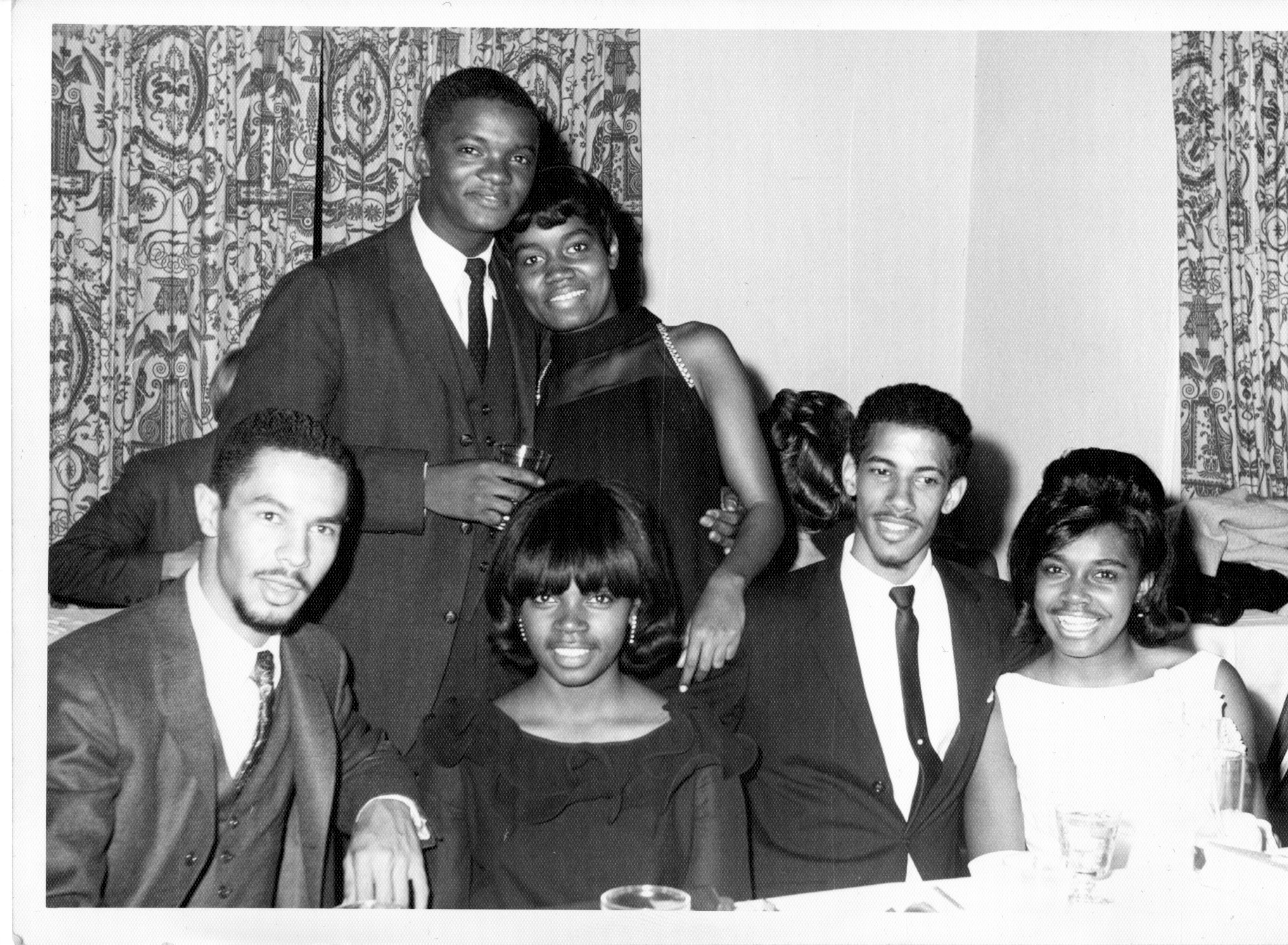
Alpha Omicron Pi sorority dance for new inductees, (fall 1967 or winter 1968). Seated left to right: Victor Goode, Diane Hinton (sister of Audrey Hinton, visiting from college), Michael Smith, Audrey Hinton. Standing: Lonnie Terry and Detra Smith. Photo courtesy of Audrey Hinton.
Black students were also able to establish a network of support by creating a Black student organization. Herman Cage, a junior in the summer of 1967, drove past a local country club when he noticed a sign outside of the golf course that read, “for members only.” The exclusive language of the sign resonated with him as he considered how Black students needed something of their own: an organization that advocated for their needs and offered a sense of community. He was also aware that due to the increase in the number of Black students, support from individuals like ‘Doc’ Glass was not a practical way of supporting every Black student on campus.
Therefore, toward the end of the second NUCAP session in the summer of 1967, NUCAP counselors, Herman Cage, Jim Pitts, Wayne Watson, and Vernon Ford formed For Members Only. When students returned to campus for the fall 1967 quarter, FMO leaders welcomed incoming students with an orientation. The leaders offered new students advice for navigating their first year, and stressed the importance “for Black students to organize for their collective survival and growth in a hostile environment.” Incoming student Barbara Butler shared in the Ebony May 1968 article “Confrontation,” that this group has reaffirmed my identity as a Black person. I came from a suburb in Virginia, and I didn’t know anything about me or my people. This group hit me in the face—my reality as a black person. And now it’s like a juice to me, my life blood.” Students intentionally chose not to be officially recognized as a student organization by the student government and administration due to fear of potential repercussions. Therefore, they funded themselves by raising membership dues. They also held elections voting in Herman Cage as its first President, and first-year Kathryn Ogletree as its Vice President.
Jim Pitts at the time was a graduate student in the Sociology program. He took note of the changes taking place among Black students at Northwestern University and surveyed students about their experiences and placed the changes in an intellectual context. He argued that Black students at Northwestern began to develop race consciousness, attempting to make sense of their environment. They organized lectures, attended off-campus conferences, and held joint dances with neighboring schools that also had small black student enrollment. In the fall of 1967, Daphne Maxwell, a sophomore, was crowned the first Black homecoming queen at Northwestern. A school newspaper published an article suggesting Maxwell “felt small” because she did not have an escort following the homecoming ceremony. Milton Gardner responded on behalf of FMO and the Black student body rejecting this notion. It was evident that Black students were developing race consciousness concerning the representation of Black students and illustrating a reason FMO served as an advocate for Black students concerning racially insensitive issues.
FMO’s mission largely addressed the social and academic needs of Black students in its early stages. Simultaneously, another Black student organization emerged with an outward focus on civil rights activism, Afro-American Student Union (AASU). That organization was led by James Turner, a Sociology graduate student. AASU members offered financial and legal assistance to students involved in civil rights campaigns in the South; particularly as some activists were arrested, beaten, and even killed.
Black students had a series of encounters with campus fraternities from the fall of 1967 to April 1968 that were significant precursors to the Bursar’s Office Takeover. One of those incidents occurred when the Sigma Chi Fraternity and FMO hosted separate parties in close proximity. Some FMO members were invited to the Sigma Chi party. However, there were Sigma Chi members who did not welcome the FMO members, and that led to a fight, ultimately involving campus security and Evanston police. The situation worsened when Evanston police sprayed mace only at two black males, who were off-campus guests, arrested them, charged them with mob action, and set high bonds of $5000. Meanwhile, the white fraternity members did not face charges. Outraged, the following day Black students met in Sargent Hall to discuss how they might get the men out of jail and compel the University to assist and hold the fraternity responsible. Seventy Black students marched to the home of Roscoe ‘Rocky’ Miller, Northwestern University President, to express that they did not feel safe on campus and that it was “the responsibility of the university to protect the bodies of all its students.” Miller proposed that they speak with the Dean of Students, Roland ‘Jack’ Hinz.
The following day, a preliminary hearing was held for the two Black men. Disappointed by the president’s response, 80 Black students assembled at Scott Hall Grill. There were graduate students, in particular, some who were involved in civil rights activism, and were academically entrenched in the study of inequality. They encouraged undergraduates who were dismayed by this experience to recognize University structures that were in place to allow for this situation to transpire as it did. Therefore, these students marched together to the court hearing. Their presence did not go unnoticed as they filled approximately 70 percent of the courtroom. The judge ruled to reduce bail. And the students quickly raised the money to pay it. However, the University did not immediately discipline the Sigma Chi Fraternity for their involvement. With pressure from Black students, the administration agreed to place the fraternity and FMO on social suspension, pending an investigation. This was considered a victory for Black students as they realized that there was power in collective action. It was also the impetus for FMO to restructure its mission to serve as a political organization advocating for Black students’ rights on campus. As a result, Black students were more willing to take greater action to change their campus environment for the better.
Sources
Visit the Bibliography page for sources consulted in this essay. Interviews were also conducted with the following Northwestern University alumni, Clovis Semmes, Herman Cage, Kathryn Ogletree, Leslie Harris, Jean Semmes, and James Pitts.

